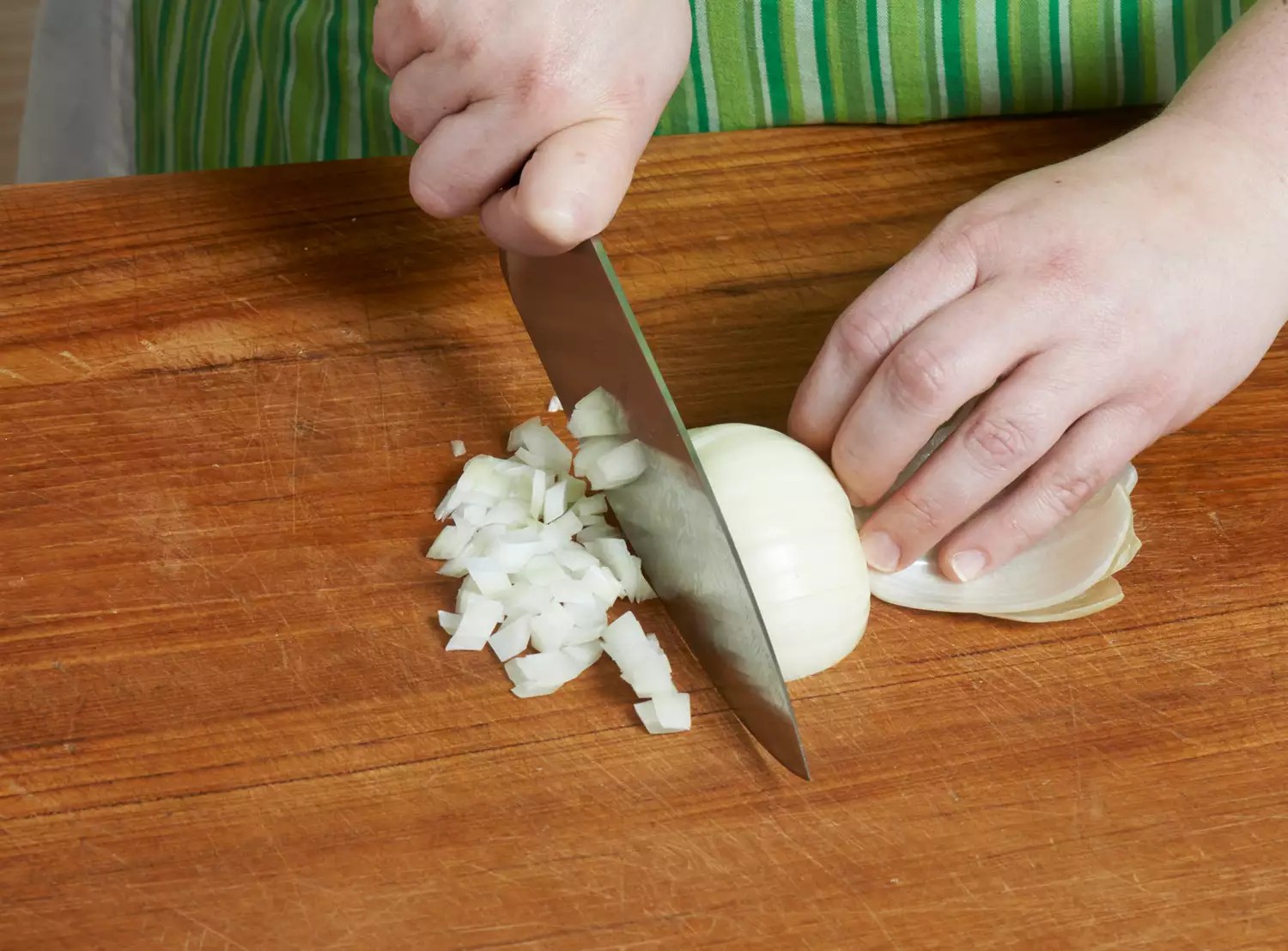The quintessential onion is one of the foundations of cooking. Need a mother sauce? An onion is involved. Need a stock? An onion is involved. No matter how you slice it (pun intended), it’s a staple in the kitchen. This bulb vegetable is a key ingredient in many of our favorite recipes. And they are versatile. Onions can be served fried, caramelized, roasted, or even raw.
Raw onions, however, can have a bad rep. You may have heard someone say they can eat cooked onions, but not straight up. Raw onions have a certain sharpness to them that can deter some. With the right choice and preparation, we can help dispel that fear.
How to Tame the Sharp Taste of Raw Onion

Know Your Varieties
One of the most important things about working with and consuming onions is knowing the varieties. There are white onions, yellow onions, red onions, Vidalia onions, scallions (green onions), shallots, and leeks. All onions are not the same, and some are better suited for different things. White and red onions are milder in flavor and are better in raw form. Vidalia onions, sometimes called sweet onions, have more sugar and therefore are usually caramelized. Leeks and shallots may seem fancy, but they are just less commonly used in home kitchens. They are often sautéed or roasted. Scallions are mainly used for garnishing and texture. It is helpful to know the varieties and their uses. The next time you scoff at a raw onion, make sure it is the “right” onion.

The Cut Matters
The last thing anyone wants to encounter is a big chunk of raw onion in their mouth. It is startling at best and can overpower the palate. The knife cut of the onion is crucial. Not only does it help to use a sharp knife to avoid tears, but the way they are cut makes a difference in how they taste in a dish overall. Raw onion should always be served with the least amount of surface area possible. Meaning, thin and/or small. A small dice is great for pico de gallo. A fine mince is great for topping hot dogs or making a flavorful, easy vinaigrette. A thin slice is great for salads or sandwiches. Anything larger should make its way to a sauté or roast pan.
Submerge Them in Cold Water
After you have cut your onions, try putting them in cold water. Soak them for at least 15 minutes (longer is even more beneficial), properly drain, and eat away! Submerging them in cold water takes away that intense, sharp bite from the raw onion. The cold water helps the enzyme that causes onions to have their pungent flavor to leach out. Similarly, storing onions in the refrigerator will help mellow them out when you go to use them.
Onions will always be a foundational ingredient in the kitchen that will never go away. Whether they are cooked or served raw, with the right tools, that sharp bite can be a distant memory and you will find a new way to enjoy fresh onions.




